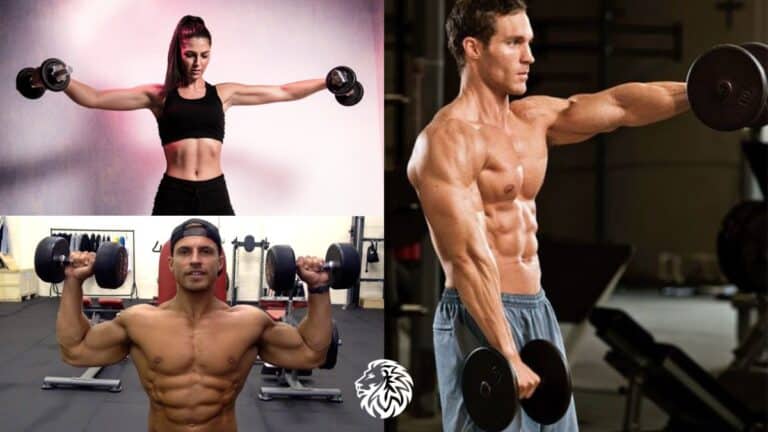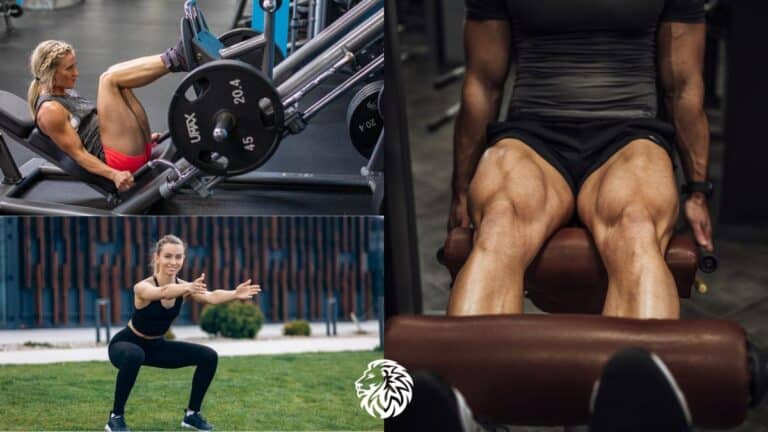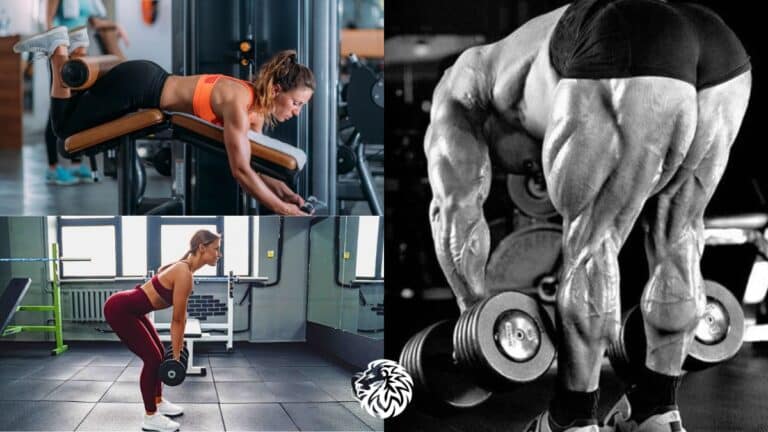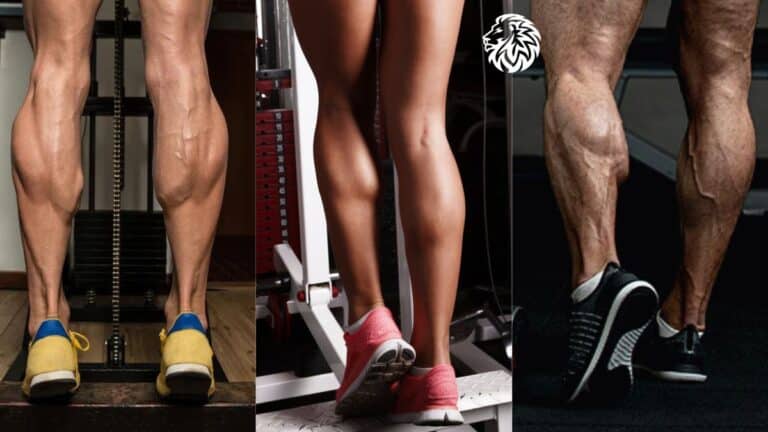Achieving six-pack abs is like embarking on a quest for the Holy Grail of fitness. It’s a goal that sparkles on the horizon, a symbol of peak physical conditioning and unwavering commitment. This journey, often portrayed as the pinnacle of fitness success in media and gym culture, is more than a quest for impressive looks; it’s a testament to one’s dedication to health and wellness. However, it’s important to embark on this journey with a healthy dose of realism.
Understanding the formation of six-pack abs is key. They’re not just the result of countless sit-ups or crunches. It’s like a dance between low body fat and strong core muscles, a balance that’s unique to each individual, influenced by factors like genetics, body type, and lifestyle. This means everyone’s path to achieving those chiseled abs can be quite different.
The route to six-pack abs is a holistic one. It’s not just about targeting your abs with specific exercises; it involves a disciplined diet, a consistent routine of full-body workouts, and an overall healthy lifestyle. The role of nutrition is especially crucial, as reducing body fat to a level where your abs are visible is largely dependent on what you eat.
It’s also crucial to remember that the pursuit of six-pack abs should never jeopardize your overall health. Extreme dieting, excessive exercise, or reliance on unregulated supplements can do more harm than good. Balance and sustainability are the keys to success.
In this article, we’ll dive into the best strategies for sculpting six-pack abs. From nutritional advice and targeted exercises to lifestyle changes and busting popular myths, we aim to offer a well-rounded guide to aid you on your quest. While the aesthetic appeal of six-pack abs might be the initial draw, the true reward often lies in the health benefits and the sense of achievement that accompanies this fitness milestone. Patience and perseverance are your allies here, as results can vary greatly from person to person. Let’s begin this journey together, with health and wellness as our guiding stars.
Understanding the Basics

Definition of Six-Pack Abs and the Muscle Groups Involved
Six-pack abs are essentially a visible manifestation of your rectus abdominis muscle, a paired muscle running vertically on each side of the anterior wall of the human abdomen. When this muscle is well-developed and body fat is low enough, the natural segmentation of the muscle creates the appearance of six distinct muscle bellies or ‘packs.’ However, it’s not just about the rectus abdominis. Achieving well-defined abs also involves strengthening the surrounding core muscles, including the obliques (at the sides of the abdomen) and the transverse abdominis (the deepest layer of abdominal muscles). These muscles play a critical role in overall core strength and stability, impacting everything from posture to athletic performance.
The Role of Body Fat Percentage in Revealing Abs
Body fat percentage is a key factor in whether or not your six-pack abs will be visible. Essentially, no matter how strong your abs are, if they’re covered by a layer of fat, they won’t show. Men typically need to achieve a body fat percentage of about 6-13% to reveal six-pack abs, while women usually need to be in the range of 14-20%. It’s important to note that these numbers can vary based on individual body types and genetic predispositions. Achieving and maintaining such low body fat levels requires a combination of consistent exercise and a controlled diet.
Importance of Overall Body Health and Fitness
While the quest for six-pack abs may start as an aesthetic goal, it’s important to prioritize overall health and fitness. A well-rounded fitness regimen that includes cardiovascular exercise, strength training, and flexibility work, alongside a balanced diet, is crucial. Not only does this approach support the reduction of body fat needed to reveal abs, but it also promotes overall health, reducing the risk of chronic diseases and improving mental health. It’s essential to approach this goal with a focus on health and fitness rather than just appearance, ensuring that the methods used to achieve six-pack abs are safe and sustainable in the long term.
Nutrition Strategies
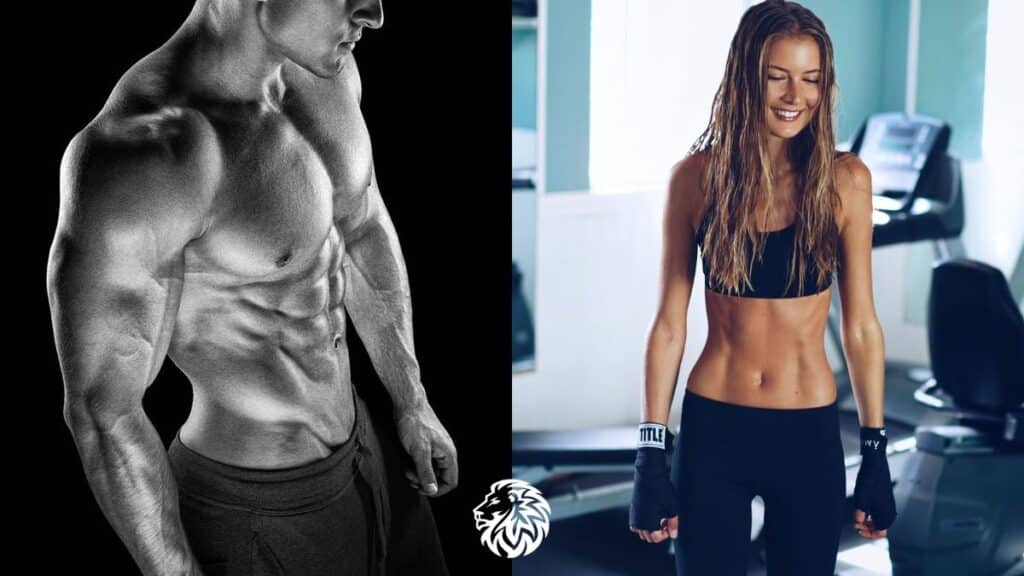
The Role of Diet in Achieving Six-Pack Abs
The adage “abs are made in the kitchen” holds a significant truth in the journey towards sculpting six-pack abs. Nutrition plays a pivotal role, perhaps even more so than exercise. To unveil the abs, one must reduce body fat through a caloric deficit, where you burn more calories than you consume. This process necessitates a well-planned diet focused on the right balance of macronutrients (proteins, fats, and carbohydrates) to support fat loss while preserving muscle mass.
Recommended Foods and Nutrients for Fat Loss and Muscle Building
- Protein: Essential for muscle repair and growth, protein should be a staple in your diet. Include lean sources like chicken, turkey, fish, eggs, and plant-based options like lentils, beans, and tofu.
- Complex Carbohydrates: Carbs are not the enemy but choosing the right kind is crucial. Opt for complex carbohydrates like whole grains, oats, quinoa, and sweet potatoes, which provide sustained energy and fiber.
- Healthy Fats: Incorporate sources of healthy fats such as avocados, nuts, seeds, and olive oil. These fats are vital for overall health and can help keep you satiated.
- Fruits and Vegetables: High in vitamins, minerals, and fiber, a variety of fruits and vegetables should fill your plate, aiding in digestion and overall health.
Importance of Hydration
Staying adequately hydrated is crucial for overall health and can aid in weight loss. Water helps in metabolism, digestion, and can act as an appetite suppressant. Additionally, sometimes thirst can be mistaken for hunger, so keeping hydrated might prevent unnecessary snacking.
Tips for Maintaining a Calorie Deficit While Ensuring Proper Nutrition
- Track Your Intake: Use food journals or apps to track what you eat. Being aware of your calorie intake and nutritional content can help you make informed choices.
- Eat Smaller, More Frequent Meals: Instead of three large meals, consider eating smaller portions more frequently to keep your metabolism active and avoid overeating.
- Focus on Whole Foods: Limit processed foods and focus on whole, unprocessed foods. They are more nutritious, less calorie-dense, and more filling.
- Mindful Eating: Pay attention to what and when you eat. Avoid distractions like watching TV during meals to prevent overeating.
- Balance is Key: Ensure your diet is balanced and includes a variety of foods to provide all the necessary nutrients. Avoid extreme diets or cutting out entire food groups, as this can be unsustainable and harmful in the long run.
Remember, while achieving a calorie deficit is necessary for fat loss, it’s important to do so in a healthy, sustainable way that includes a balanced diet and adequate nutrition. This approach not only supports the goal of revealing six-pack abs but also promotes overall health and well-being.
Effective Exercises for Abs

Introduction to Core Strengthening Exercises
Core strengthening exercises are crucial not only for developing six-pack abs but also for improving overall fitness and stability. A strong core enhances balance, supports proper posture, and can reduce the risk of injuries. When focusing on the core, it’s essential to target all its components, including the rectus abdominis, obliques, transverse abdominis, and the lower back muscles.
Detailed Descriptions of Effective Ab Exercises
- Planks: A foundational core exercise that strengthens the entire core. To perform, maintain a push-up position but with your forearms on the ground, aligning elbows below shoulders. Keep your body straight from head to heels, engaging your core, glutes, and thighs. Hold this position for 20-60 seconds.
- Crunches: Effective for targeting the rectus abdominis. Lie on your back with knees bent and feet flat on the floor. Place your hands behind your head without locking your fingers. Contract your abs to lift your upper body off the floor, then slowly lower back down.
- Leg Raises: Excellent for lower abs. Lie on your back, legs straight, and hands beneath your lower back for support. Slowly raise your legs to a 90-degree angle, keeping them straight, then lower them back down without touching the floor.
- Bicycle Crunches: Great for obliques and entire abs. Lie on your back, hands behind your head, and legs in a tabletop position. Bring your right elbow to your left knee, then alternate sides in a pedaling motion.
Incorporating Full-Body Workouts for Overall Fat Reduction
While targeted ab exercises are important, full-body workouts are key to reducing overall body fat. Incorporate exercises like squats, deadlifts, lunges, and push-ups, which engage multiple muscle groups and burn more calories. Cardiovascular exercises such as running, cycling, or swimming are also vital for fat burning and overall fitness.
Frequency and Duration of Workouts for Optimal Results
For effective results, aim to incorporate core exercises into your routine 3-4 times a week. Each session should last about 20-30 minutes, focusing on quality rather than quantity of repetitions. Ensure to have rest days in between to allow muscle recovery. Remember, consistency and a gradual increase in intensity and duration are key to progress.
It’s important to note that exercises should be performed with proper form to prevent injuries and maximize effectiveness. As you progress, you can increase the difficulty of these exercises by adding variations or weights. Also, listen to your body and adjust your exercise regimen as needed, especially if you have any pre-existing health conditions or injuries.
Lifestyle Adjustments

The Impact of Sleep and Stress on Body Composition
The journey to achieving six-pack abs extends beyond diet and exercise; it also encompasses crucial lifestyle factors like sleep and stress management. Sleep and stress levels have a significant impact on body composition, influencing factors such as metabolism, appetite, and fat storage.
- Sleep: Adequate sleep is vital for muscle recovery and growth, which are essential when working towards defined abs. Lack of sleep can disrupt hormonal balances, leading to increased appetite, cravings for unhealthy food, and decreased energy levels, making it harder to stick to exercise and diet routines.
- Stress: Chronic stress can lead to an increase in cortisol levels, a hormone that, when elevated, can promote fat storage, particularly around the midsection. Stress can also lead to emotional eating and disruption of exercise routines.
Importance of Consistent Sleep Patterns
Establishing a consistent sleep schedule is key to ensuring your body gets the rest it needs to support your fitness goals. Aim for 7-9 hours of quality sleep per night. Stick to a regular bedtime and wake-up time, even on weekends. Creating a pre-sleep routine, like reading or meditating, can improve sleep quality. Ensure your sleep environment is conducive to rest, with minimal light and noise.
Stress Management Techniques That Aid in Fat Loss
Managing stress is crucial for both mental well-being and physical health. Here are some effective stress management techniques:
- Exercise: Regular physical activity is an excellent stress reliever. It releases endorphins, which are natural mood lifters.
- Mindfulness and Meditation: Practices like yoga, meditation, and deep breathing can significantly reduce stress levels.
- Time Management: Organizing your schedule to avoid last-minute rushes can help reduce stress. Prioritize tasks and don’t overcommit.
- Social Support: Connecting with friends and family can provide emotional support and help manage stress.
- Hobbies and Leisure Activities: Engage in activities you enjoy. This can be an effective way to take a break and reduce stress.
By addressing these lifestyle factors, you not only aid in achieving six-pack abs but also improve your overall quality of life. Remember, achieving any fitness goal is as much about mental health and well-being as it is about physical changes.
The Role of Supplementation

Overview of Supplements That Might Aid in Fat Loss and Muscle Gain
Supplements can sometimes play a role in supporting your journey towards achieving six-pack abs, particularly when it comes to aiding fat loss and muscle gain. However, it’s important to remember that they should complement, not replace, a balanced diet and regular exercise. Some common supplements include:
- Protein Powders: Whey, casein, or plant-based proteins can help in muscle recovery and growth, especially useful if your daily protein intake is insufficient from food alone.
- Branched-Chain Amino Acids (BCAAs): These can support muscle growth and reduce muscle soreness after workouts.
- Creatine: A well-researched supplement that can increase muscle mass and improve exercise performance.
- Omega-3 Fatty Acids: Found in fish oil supplements, they can aid in muscle growth and fat loss.
- Fat Burners: These supplements, often containing caffeine, green tea extract, or conjugated linoleic acid, claim to boost metabolism and increase fat loss. However, their effectiveness is often debated and varies greatly among individuals.
- Vitamins and Minerals: Ensuring adequate intake of essential vitamins and minerals, either through diet or supplements, is crucial for overall health and optimal bodily function.
Warning About the Limitations and Potential Risks of Relying on Supplements
While supplements can provide additional support, they are not magic solutions for fat loss and muscle gain. It’s essential to approach them with caution:
- Effectiveness and Necessity: Not all supplements are effective for everyone, and many people can achieve their fitness goals without them. Whole foods are generally the best source of nutrients.
- Regulation and Safety: The supplement industry is not as tightly regulated as pharmaceuticals. Therefore, the purity and accuracy of ingredients listed on supplements can sometimes be questionable.
- Potential Side Effects: Some supplements can have side effects or interact with medications. For example, high doses of caffeine can cause anxiety, insomnia, and increased heart rate.
- Medical Advice: It’s crucial to consult with a healthcare professional or a registered dietitian before starting any supplement, especially if you have underlying health conditions or are on medication.
While certain supplements can aid in your fitness journey, they should be used responsibly and as part of a broader approach that includes a nutritious diet and regular exercise. Relying solely on supplements for achieving six-pack abs is neither effective nor healthy in the long run.
Myths and Misconceptions

Debunking Common Myths about Getting Six-Pack Abs
The quest for six-pack abs is rife with myths and misconceptions that can lead to ineffective practices and unrealistic expectations. Understanding and debunking these myths is crucial for a successful and healthy approach.
- Myth: Spot Reduction Is Possible
- Truth: It’s a common misconception that you can lose fat in specific areas of your body by targeting those areas with exercise. However, spot reduction is a myth. Fat loss occurs evenly throughout the body, and while core exercises strengthen the abdominal muscles, they don’t directly burn belly fat.
- Myth: High-Rep Ab Exercises Alone Will Reveal Abs
- Truth: While abdominal exercises are important for building ab muscles, they won’t be visible if a layer of fat covers them. A combination of diet, full-body workouts, and consistent cardio is essential for reducing overall body fat.
- Myth: Diet Supplements and Quick Fixes Can Fast-Track Abs
- Truth: There are no shortcuts to getting six-pack abs. Supplements and quick-fix solutions may promise rapid results, but sustainable six-pack abs are achieved through a consistent and balanced approach to diet and exercise.
- Myth: You Need to Eliminate All Fats from Your Diet
- Truth: Not all fats are bad. Healthy fats, like those found in avocados, nuts, and fish, play a crucial role in nutrition. The key is to maintain a balanced diet that includes a healthy mix of nutrients.
Emphasizing the Importance of a Balanced Approach
Achieving six-pack abs should be about more than just appearances; it should be a journey towards better overall health and fitness. A balanced approach that includes a nutritious diet, a mix of cardiovascular and strength training exercises, adequate rest, and proper hydration is vital. This approach not only aids in developing six-pack abs but also promotes overall physical and mental well-being.
It’s important to set realistic goals and timelines, understanding that progress takes time and varies from person to person. Patience, consistency, and dedication are key. Moreover, it’s crucial to listen to your body and make adjustments as needed, ensuring that the pursuit of fitness goals doesn’t compromise overall health and well-being. By dispelling myths and adopting a balanced, informed approach, the journey to achieving six-pack abs can be both effective and rewarding.
Putting It All Together

Creating a comprehensive plan that combines diet, exercise, and lifestyle adjustments is crucial for achieving six-pack abs. Here’s a sample week-long plan to get you started:
Day 1 to Day 7:
Diet:
- Breakfast: Oatmeal with berries and a protein source like Greek yogurt or a protein shake.
- Lunch: Grilled chicken or tofu salad with a variety of vegetables, dressed with olive oil and vinegar.
- Snack: A piece of fruit and a handful of nuts or a protein bar.
- Dinner: Baked fish or lentil stew with quinoa and steamed vegetables.
- Hydration: Aim for at least 2-3 liters of water throughout the day.
Exercise:
- Monday (Day 1): Full-body strength training followed by 20 minutes of moderate cardio.
- Tuesday (Day 2): Core-focused workout including planks, crunches, and leg raises.
- Wednesday (Day 3): Active recovery day with light activities like walking or yoga.
- Thursday (Day 4): High-intensity interval training (HIIT) for cardio.
- Friday (Day 5): Core-focused workout with variations from Tuesday’s routine.
- Saturday (Day 6): Full-body strength training with a different set of exercises from Monday.
- Sunday (Day 7): Rest day or gentle stretching/yoga.
Lifestyle Adjustments:
- Ensure consistent sleep patterns, aiming for 7-9 hours of sleep per night.
- Practice stress management techniques like mindfulness, meditation, or hobbies.
- Avoid late-night eating and reduce alcohol and sugar intake.
Tips on Tracking Progress and Adjusting the Plan:
- Monitor Your Diet: Use a food diary or an app to track your meals and ensure you’re maintaining a calorie deficit.
- Track Exercise Progress: Log your workouts, noting increases in strength or endurance.
- Measure Body Composition: Rather than focusing solely on weight, measure body fat percentage if possible.
- Take Photos: Progress photos can be motivating and provide a visual reference for changes in body composition.
- Listen to Your Body: Pay attention to how you feel. Fatigue, persistent soreness, or hunger may indicate the need for adjustments.
- Be Patient and Consistent: Remember that changes won’t happen overnight. Consistency is key to long-term success.
This sample plan is a general guideline and should be adjusted based on individual needs, preferences, and goals. Consulting with fitness and nutrition professionals can provide personalized recommendations and ensure that your plan is safe and effective.
Conclusion
In pursuit of six-pack abs, the journey encompasses much more than just a fitness goal; it’s a comprehensive lifestyle commitment. Key points to remember include:
- Understanding the Basics: Six-pack abs are a combination of developed core muscles and low body fat, which varies from person to person.
- Nutrition Strategies: A balanced diet focusing on proteins, complex carbohydrates, healthy fats, and plenty of fruits and vegetables, alongside adequate hydration, is crucial.
- Effective Exercises: A combination of targeted core exercises and full-body workouts, along with consistent cardio, are essential for muscle building and fat reduction.
- Lifestyle Adjustments: Adequate sleep and effective stress management play significant roles in achieving your fitness goals.
- Role of Supplementation: While supplements can support your journey, they are not a substitute for a healthy diet and regular exercise.
- Myths and Misconceptions: Debunking common myths, such as spot reduction and quick fixes, and understanding that a balanced approach is key.
- Putting It All Together: Combining diet, exercise, and lifestyle changes into a consistent plan, while being flexible and making adjustments as needed.
Achieving six-pack abs requires patience, persistence, and a balanced approach. It’s important to remember that health and fitness are ongoing journeys, not just destinations. Results will vary and they take time. Celebrate small victories and don’t get discouraged by setbacks. Maintaining a positive mindset and being consistent with your efforts are as important as the physical aspects of this journey.
Ultimately, the pursuit of six-pack abs should be part of a larger goal of overall health and well-being. By focusing on a holistic approach that incorporates physical, nutritional, and mental health aspects, you set yourself up not just for aesthetic success, but for a healthier, more balanced lifestyle.

